In this article, we delve into the tactical approach of Oliver Glasner at Crystal Palace. Known for his strategic sharpness and innovative methods, Glasner has brought a fresh perspective to the team. We will explore the formations, key player roles, and overall strategies that define Glasner’s tenure at Crystal Palace. By breaking down the tactical elements, we aim to understand how Glasner’s philosophy has influenced the team’s performance and what it means for their future prospects. Join us as we analyze the tactical intricacies that Oliver Glasner has introduced to Crystal Palace.
Build-up
Low Build-up
Glasner sets his team up in a 4-2-5 formation in the low build-up, with the goalkeeper playing between the center-backs and a box midfield in the middle.
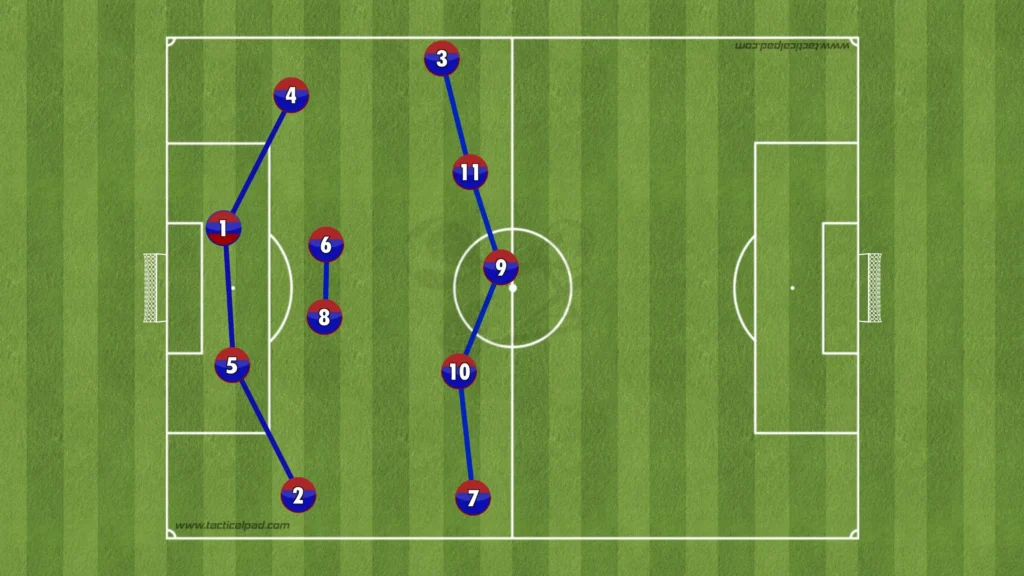
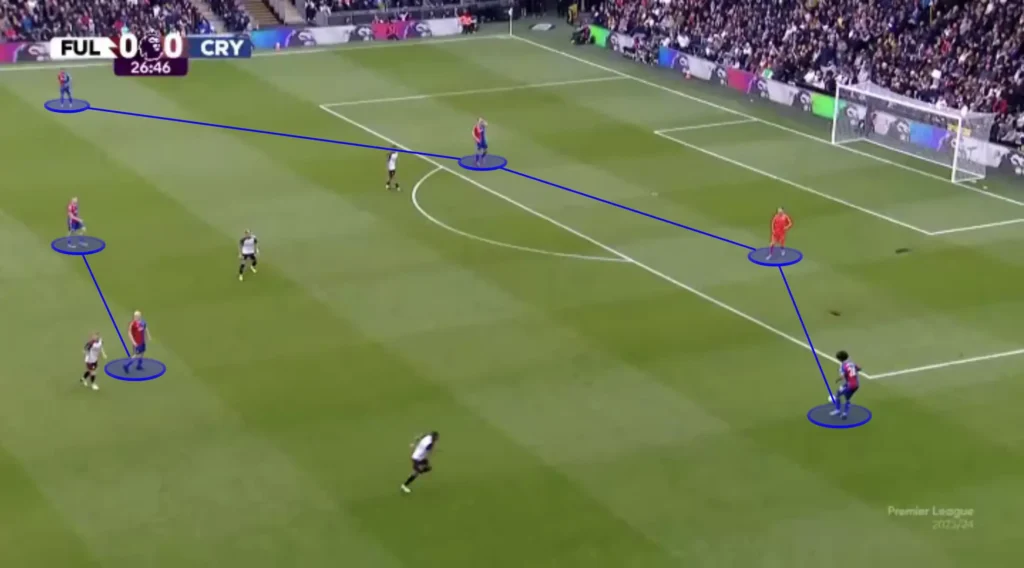
They often drop with the attacking midfielders and like using the goalkeeper, which creates numerical superiorities, allowing them to beat the press.
High Build-up
Glasner’s Crystal Palace set up in a 1-3-2-5 formation in the high build-up, the same as in the low build-up without the goalkeeper between the center-backs.
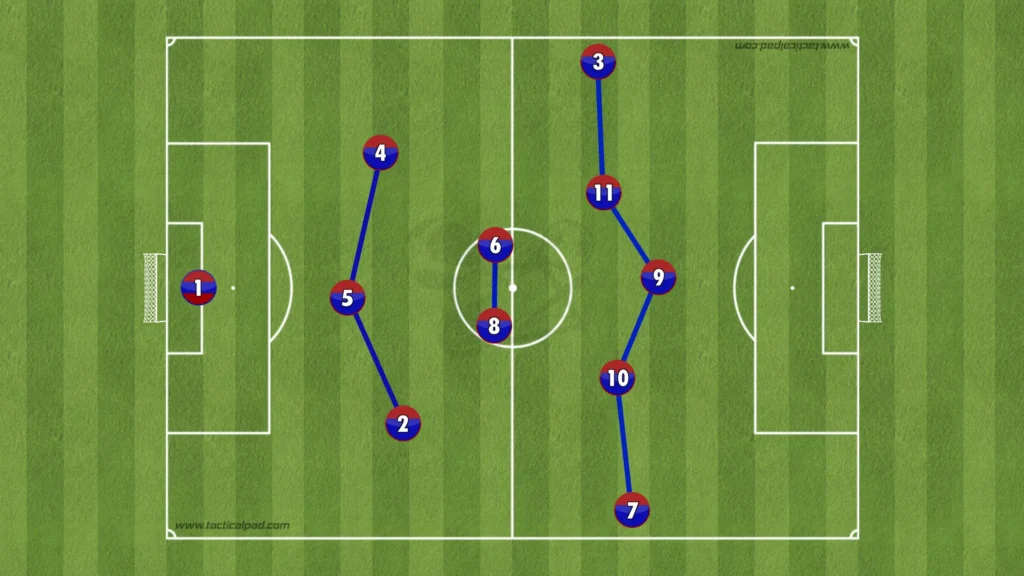
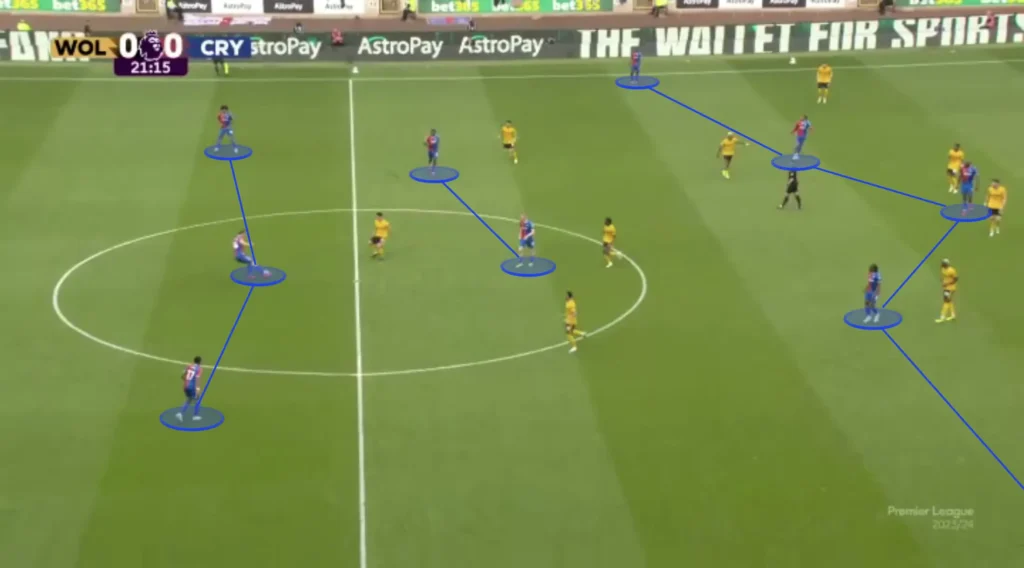
Having four central midfielders(two holding and two attacking) creates more options in the center and less space between the players. Glasner likes this because he prioritizes playing through the middle. He needs one player high and wide to pull apart the backline while the rest create numerical advantages in the midfield areas. This builds good conditions in defensive transitions, allowing more players to press when they lose the ball. Another purpose for keeping many players in the middle is to shorten the distance between them. This shortens the length of the passes, which naturally shortens the time between passes. This means the opposition players will have less time to push up and press, giving the Palace players more time and control.
High Backline (off)
A massive aspect of Crystal Palace’s high build-up is they keep a high backline. This helps in the counter-press because they get closer to the center. Having more players close to the center who can win the ball back makes it difficult for the opposition to do anything when they win possession. Furthermore, the high backline shortens the distance between players, shortening the time and length of the passes and preventing the opposition from pushing up their defense.
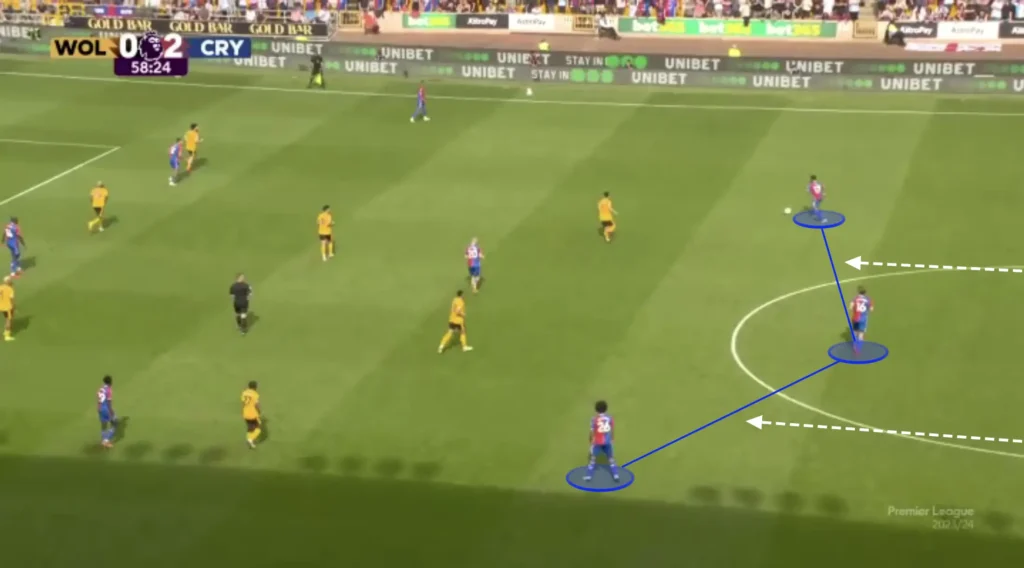
Finding the Pockets
Crystal Palace always try to find the attacking midfielders in the pockets. Their midfield numerical superiority usually means that at least one will be open. They will look for passes from the back or the wing, breaking lines and finding an attacking midfielder who will turn and drive at the defense.
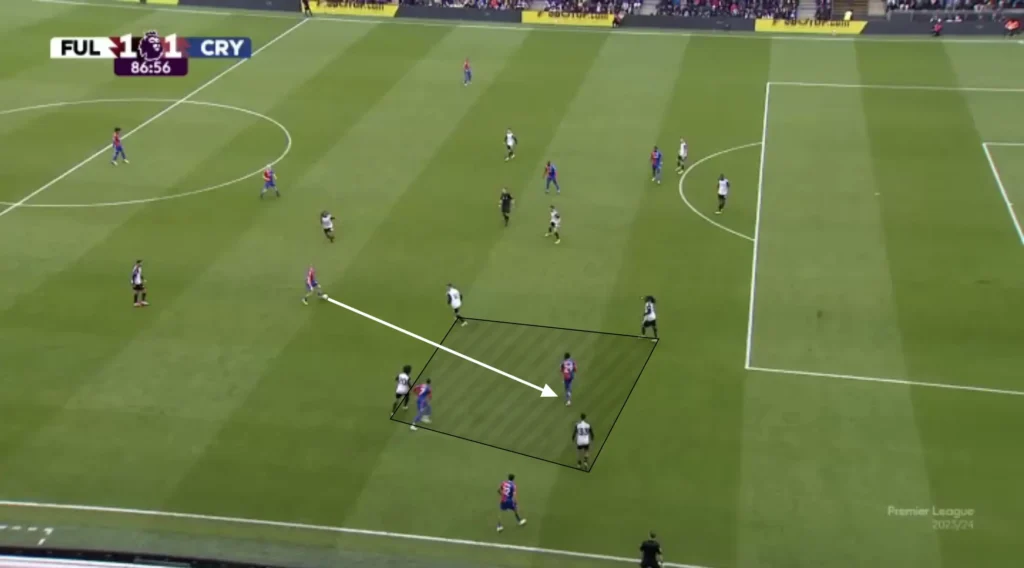
Numerical Advantages
Another massive aspect of Crystal Palace’s high build-up is their ability to create numerical advantages against the opposition’s defensive line. Their front five naturally becomes numerically superior against a back four, which they are great at taking advantage of.
When the defending team is positioned on one side, the weak-side fullback becomes vulnerable to the long switch of play due to the 1v2 against Palace’s winger and attacking midfielder. Glasner’s team often capitalizes on this by getting the ball to the winger and creating many opportunities from 2v1 situations on the wing and in the half-spaces.
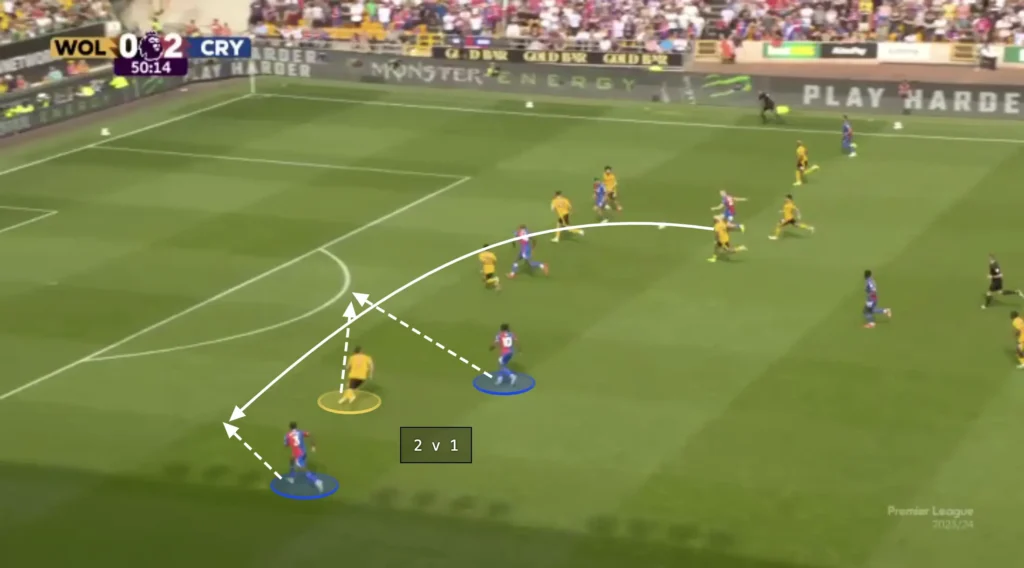
Final Third
Attacking the Half-Space
Crystal Palace is a great team in the final third. They always create many chances, mainly by attacking the space between the opposition center-back and fullback. They primarily do this from the wide areas with underlaps from the attacking midfielders or sometimes the wide center-backs.
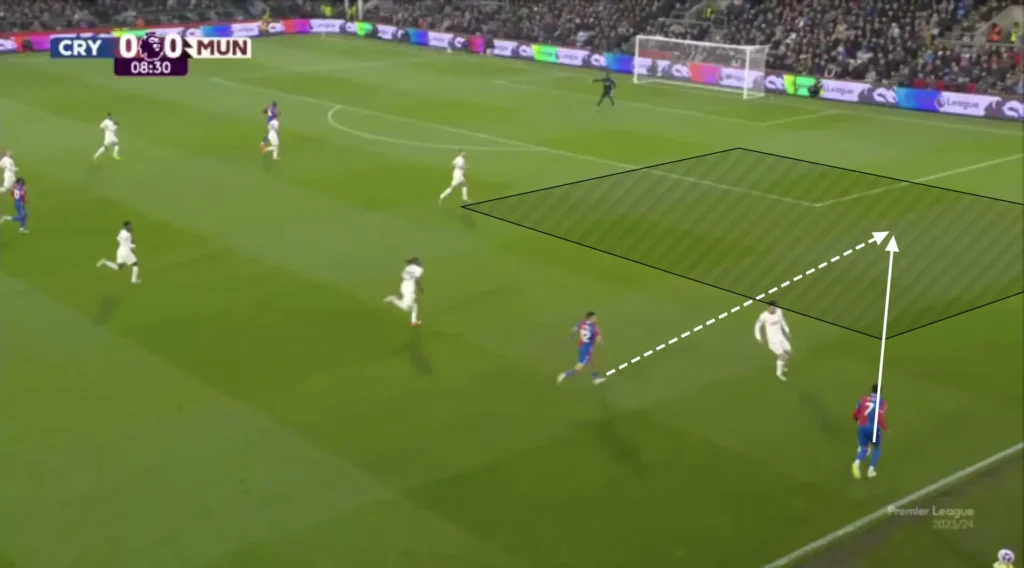
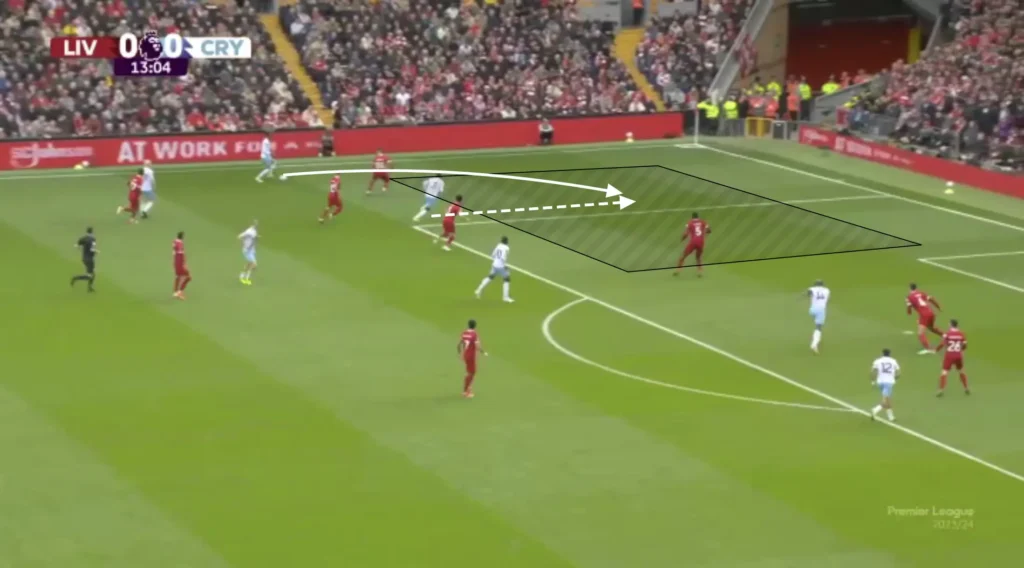
The winger can either play the ball to the underlapping player, who can cross to a teammate in the box, or take the ball inside to combine with an attacker or shoot.
Overlaps
Crystal Palace also use overlaps to produce opportunities in the final third. When the winger gets the ball, a Palace player quickly makes the overlap, creating a 2v1 on the wing. If the opposition fullback drops to cover the overlapping run, the winger could cut inside, taking a shot or combining with a midfielder. If the fullback covers the center, the ball can easily be played to the overlapping player, creating a crossing opportunity.
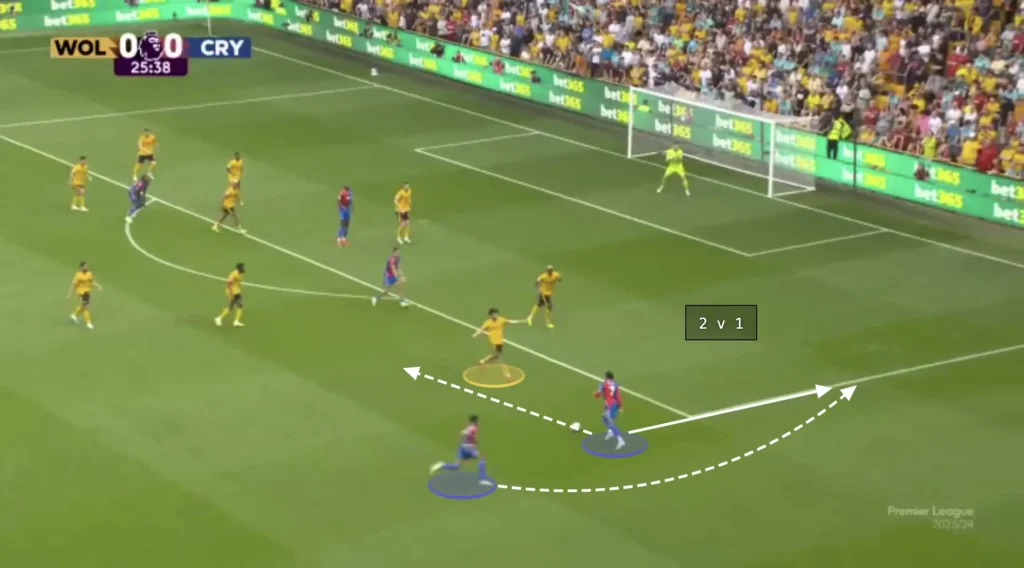
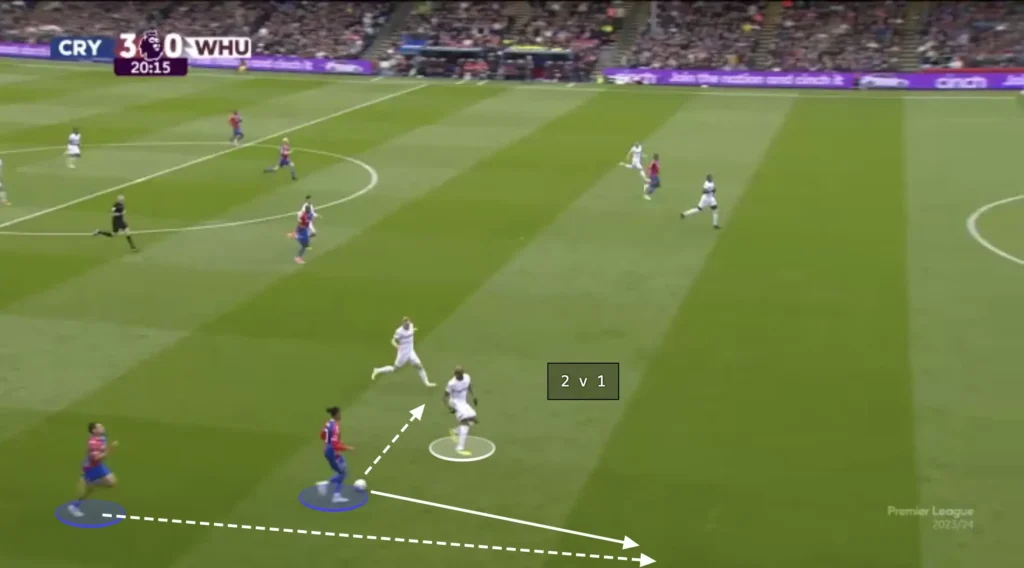
Defending
Low Press
In the low press, Glasner’s Crystal Palace use a 1-5-2-3 formation. They look to set up in a mid-block, always trying to close the center, forcing the opposition out wide.
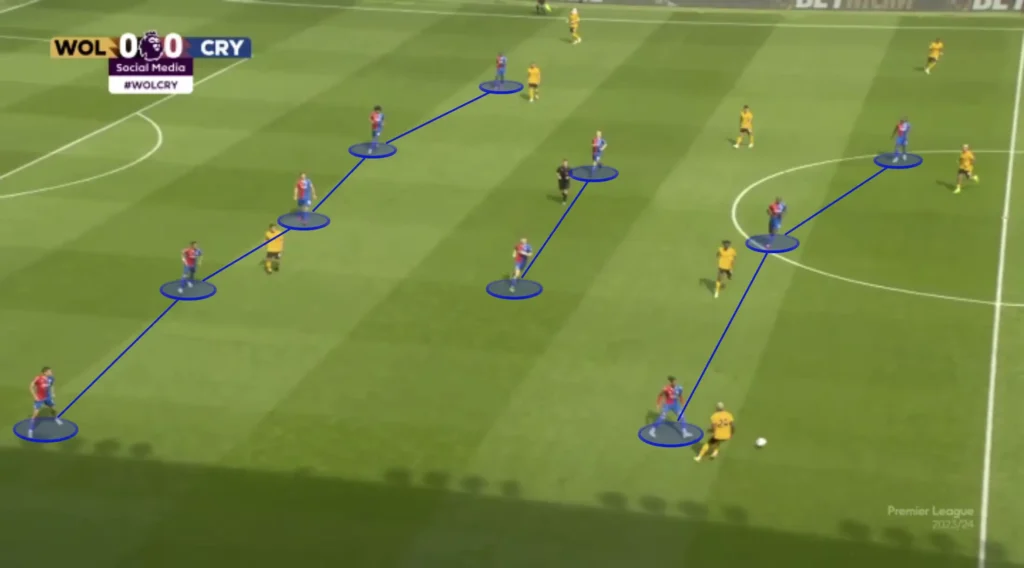
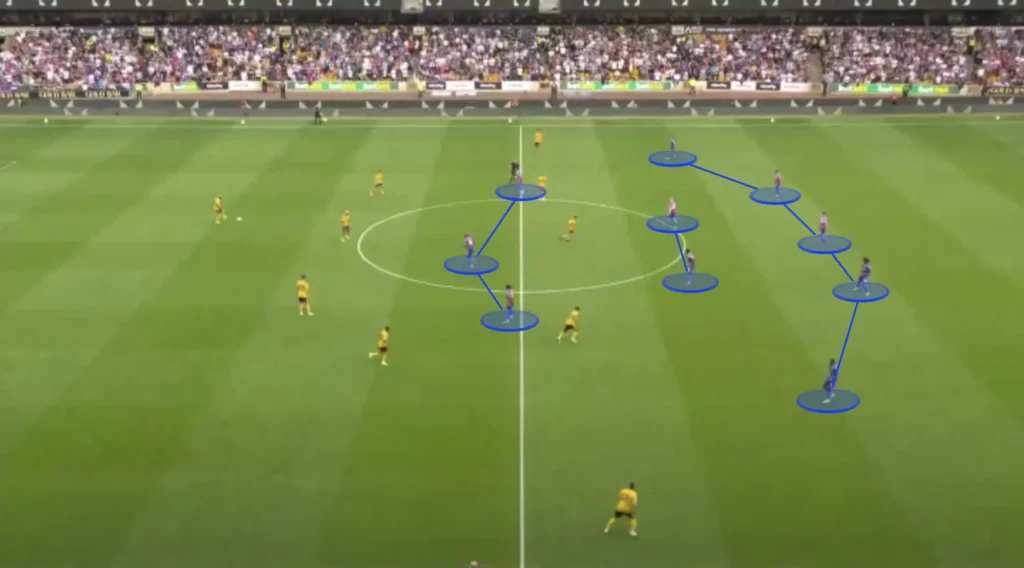
Crystal Palace are always extremely compact in their defensive shape. The compact shape makes it almost impossible for teams to find spaces between the Palace lines, making them very difficult to break down.
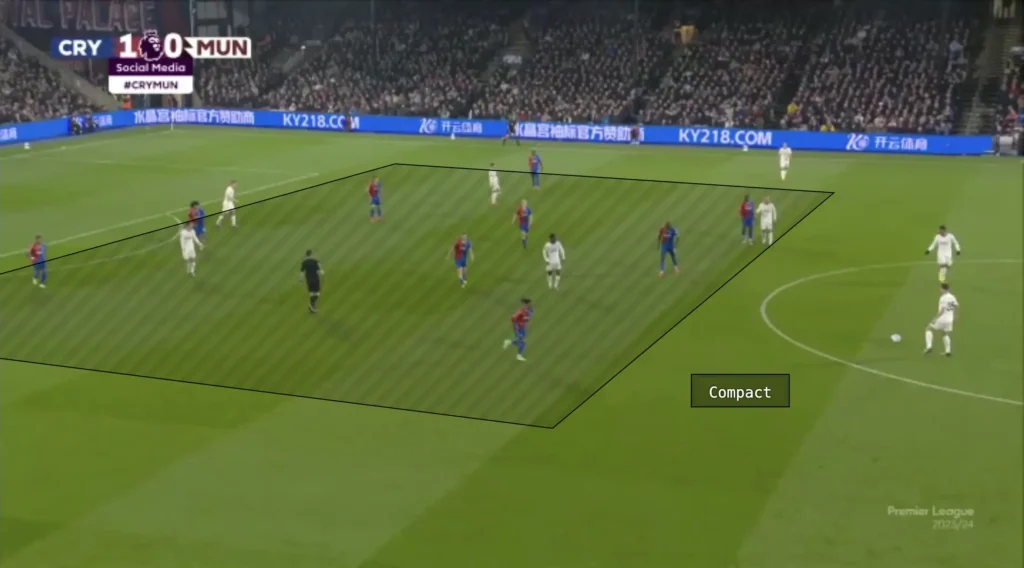
High Backline (Def)
One tool that helps to be compact is to play with a high backline, making the space to the midfield line as small as possible. Crystal Palace do this and usually try to keep the highest line they can without leaving the space behind them too open. Defending with a high backline involves positioning the defensive line closer to the midfield, rather than near the goalkeeper. This tactic compresses the space available for the opposing team to operate, disrupting their build-up play and increasing the chances of winning the ball back quickly.
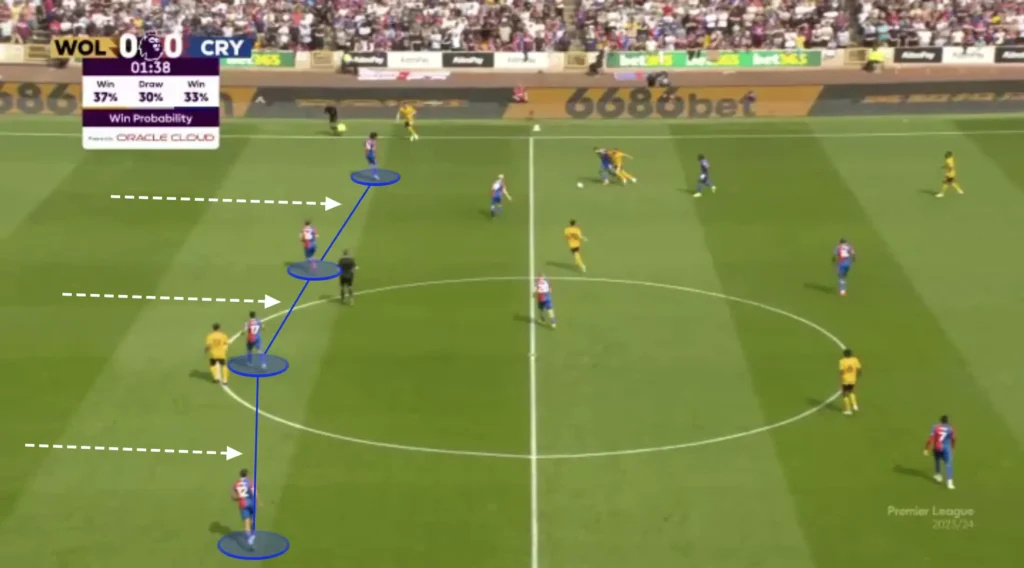
A high backline also allows defenders to support the midfield more effectively, creating numerical superiority in central areas and facilitating quicker transitions from defense to attack. However, it requires defenders with good pace and positional awareness to deal with long balls and prevent opposing attackers from exploiting the space behind. This approach demands constant communication and coordination among the backline to maintain a cohesive and effective defensive structure.
Everyone must be in the same line when defending with a high backline to maintain an effective offside trap, ensure cohesive coverage, and reduce gaps that attackers can exploit. A well-aligned defensive line makes it easier to catch opposing forwards offside, preventing them from receiving the ball in dangerous positions.
Another crucial detail that Glasner focuses on is the defender’s body position. He wants them to play side-on, being ready to run both forward and backward. Tracking the run in behind is more difficult when facing forward than if you play side-on. If you are facing forward, you have to turn your entire body before starting to run. Playing side-on gives a quicker reaction time, enabling faster movement in both directions.
Squeezing the Pitch
Glasner’s Crystal Palace always look to squeeze the pitch when defending. This means constantly pushing the team up as much as possible when defending. Every time the opponent plays a slow, sideways pass or a back pass, Crystal Palace’s first line of pressure pushes up, with the rest of the team following to stay compact. When the next pass comes, they push up even more, forcing the opponent back even more. They do this because it pushes the opponent further away from the Crystal Palace goal, making it harder to create chances. Squeezing the pitch when possible is crucial for teams who do not necessarily look to always be in possession.
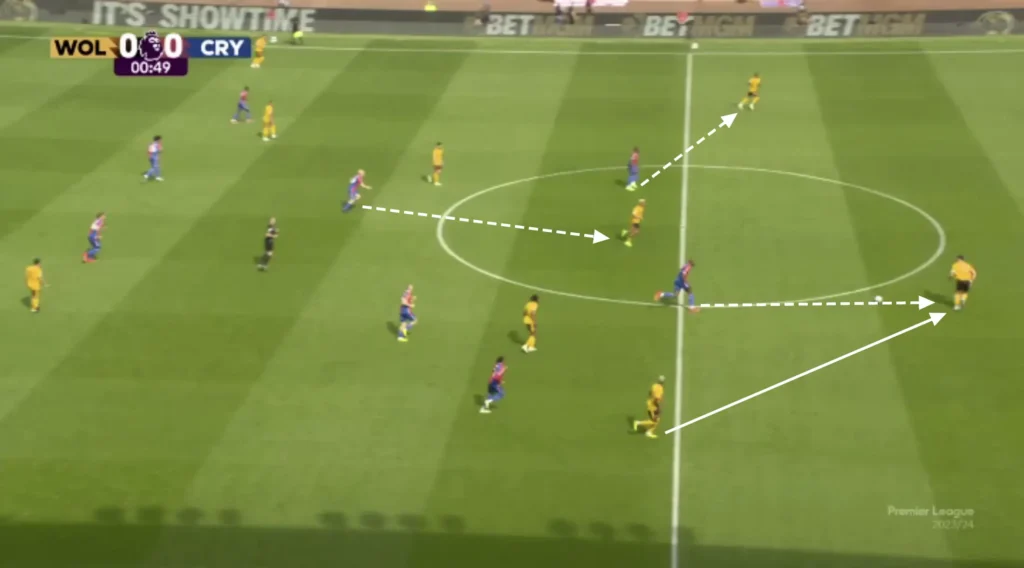
High Press
Crystal Palace like to press high when given the opportunity. They do this by staying in their 1-5-2-3 formation, waiting for press triggers such as bad touch, long backward pass, bad pass, etc. When they press, they press as a unit, all working together to win the ball. The Palace striker usually presses the center-backs with an angled run to close the passing lane to the other center-back. This forces the opposition center-back out to the side where Crystal Palace will overload, giving him fewer passing options.
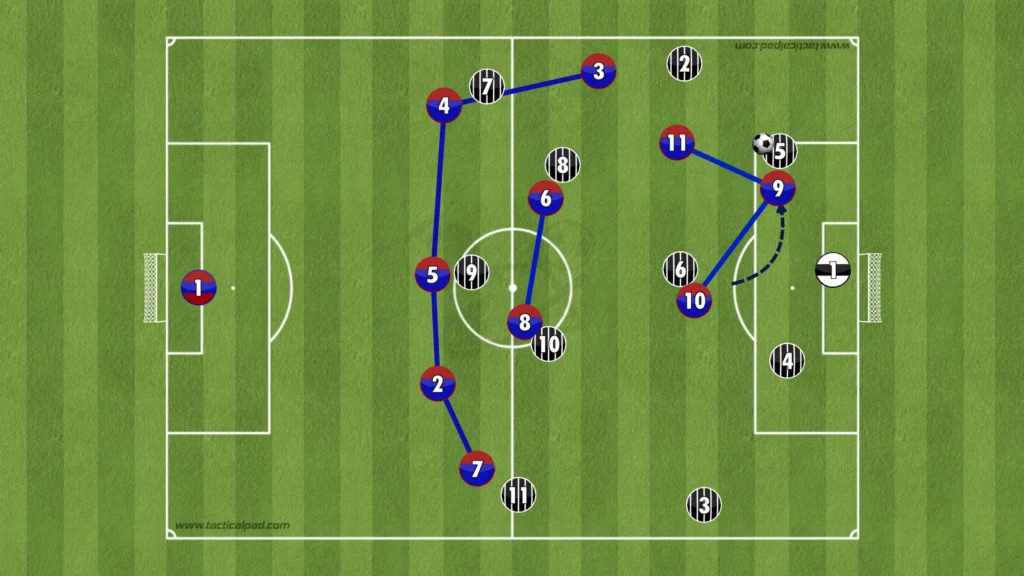
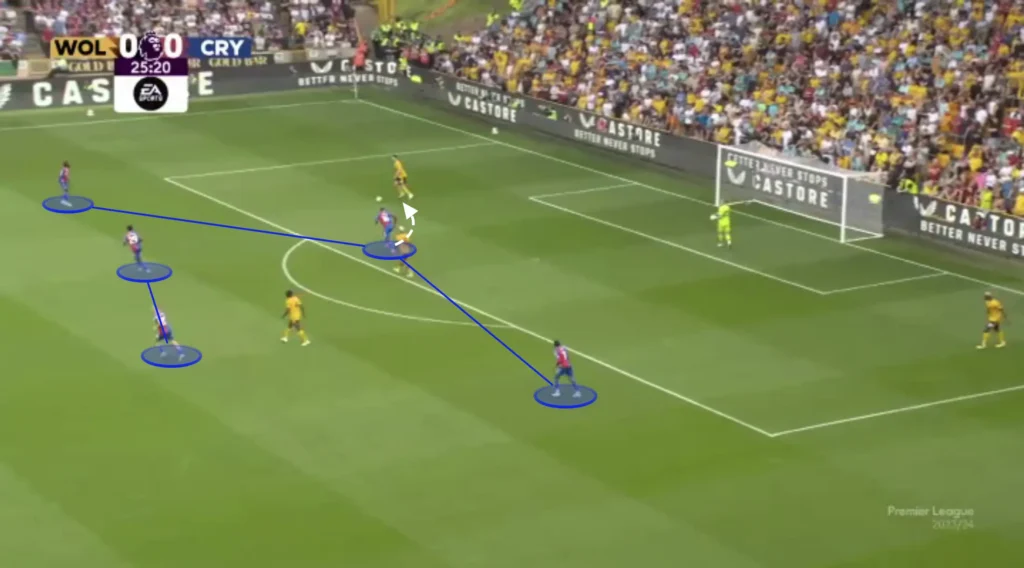
Transitions
Defensive Transitions
Positioning many players centrally, creating a numerical advantage in the midfield, creates good conditions in defensive transitions. Many players close to the ball after losing possession means that many players can work towards regaining possession. Therefore, Crystal Palace often successfully regain possession directly after losing it.
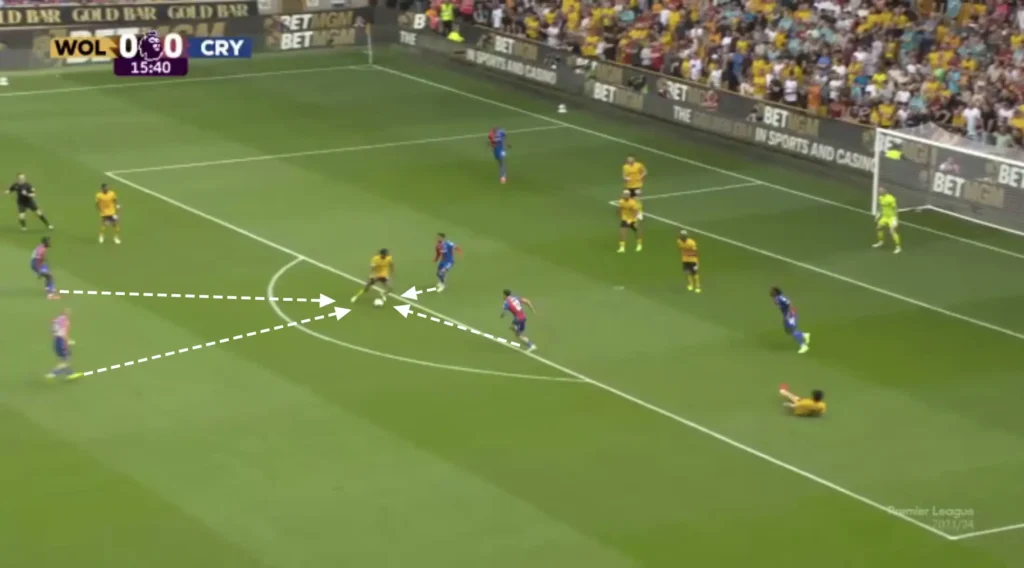
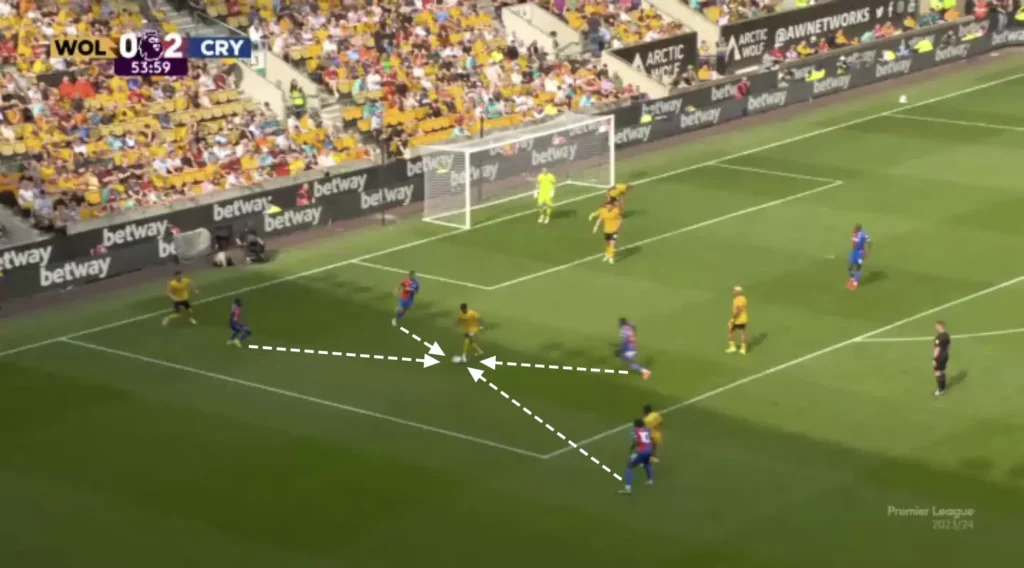
Offensive Transitions
Oliver Glasner wants his team to counterattack in their offensive transitions. They do this with a high tempo, often attacking the spaces between the center-backs and fullbacks. In addition, keeping many players centrally while defending enables them to incorporate more players into the counterattacks.
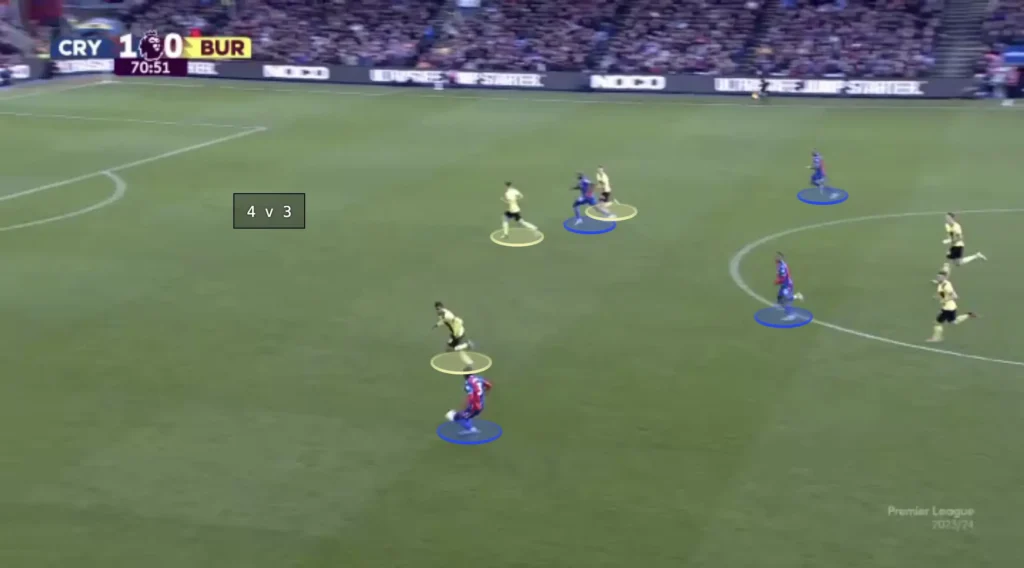
Final Thoughts
In conclusion, Oliver Glasner’s tactical approach to Crystal Palace showcases a blend of meticulous planning and adaptive strategies. His emphasis on well-structured defending, fluid midfield transitions, and dynamic attacking plays has brought a fresh and effective style to the team. The balance between defensive solidity and offensive creativity reflects Glasner’s keen understanding of the game and his ability to maximize the potential of his squad.
As Crystal Palace continues to evolve under Glasner’s guidance, the tactical insights highlighted in this analysis illustrate the transformative impact of his leadership. The team’s ability to adapt to different opponents and situations is a testament to Glasner’s strategic acumen. Fans can look forward to an exciting period of growth and success as Crystal Palace embraces and implements the tactical principles of their innovative manager.
